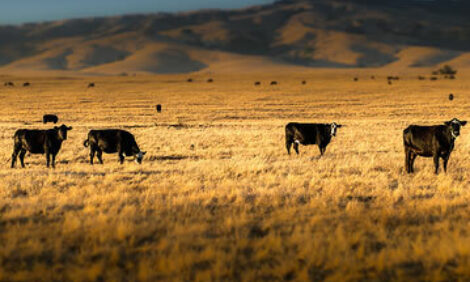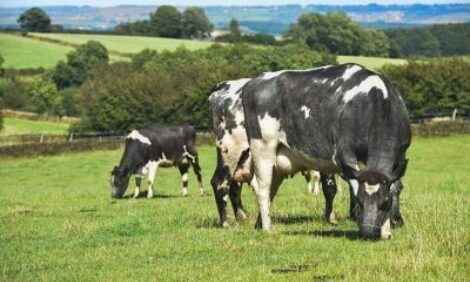



Getting The Dry Cow Fit For Purpose
Professor David Beever from Keenan addressed a seminar at the National All Breeds Show on dry cow nutrition, reports Charlotte Johnston, TheCattleSite junior editor."25 per cent of annual culls are within 60 days of calving. Why?" asked Professor Beever.
Professor Beever said that prophylatics solve problems but they do not prevent them. The so called "far-off" and "close-up" feeding was not appropriate management and often led to over-feeding in the three to six weeks pre calving which leads to retained foetal membrane (RFM), milk fever, displaced abomasums and fatty liver.
A survey carried out in the UK showed that on average 30 per cent of cows required calving assistance, 13 per cent had RFM and 13 per cent got milk fever, which Professor Beever called a 'gateway disease'.
"This data suggests that current feeding systems are not working."
Cow should be dried off at a body condition score of 2.75-3 or the body condition that they will calf with. This weight should then be maintained throughout the dry period.
Keenan offers a Low Energy/ High Fibre ration which contains high levels of straw - in fact 50 per cent. The remainder is made up of 30 per cent forage (not all grass as often high levels of pottasium) and 20 per cent energy/ protein feed.
This ration specification provides 11 ME/kg dry matter (DM) and 13 per cent crude protein, which is approximately 100 MJ/ cow per day. This is what Professor Beever would recommend for Holsteins, however rations would be less for smaller breeds.
Professor Beever said that the straw must be adequately chopped (4-8 cms) and it must be well mixed into the ration.
The high content of straw allows the rumen to operate at maximum efficiency. Potassium intake is often also decreased which improves calcium levels, reducing the risk of milk fever.
The diet is fed consistently from day one of the drying off period.
Data from Keenan shows a significant improvement in dairy cow health. There were 77 per cent fewer cases of milk fever, with only six per cent of cows suffering from RFM.
The study showed that cows had a better calcium status, improved immunity, fertility and fewer calvings requiring assistance.
Body condition scores were maintained throughout the dry period and there was less loss of body condition post calving.
The data also showed less internal fat at calving, which is what likely led to a reduction in calving issues.
Veterinary costs were reduced as was stress for both the animal and herdsman.
Whilst there were no negative effects on lactational yields, there was a slightly lower peak lactation.


